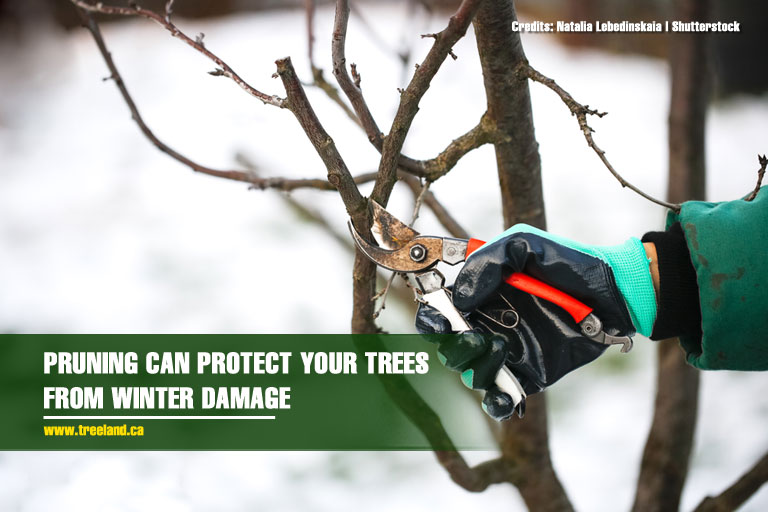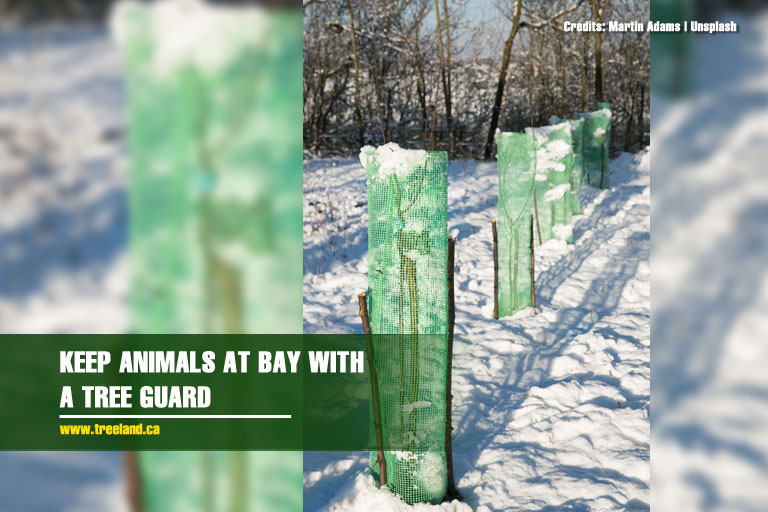Your trees’ health is at stake throughout the winter. They’re working hard on the inside while appearing to be lifeless on the exterior. It’s up to you to keep them safe from everything this season has to offer, from sunburn to dehydration.
Some individuals get by with doing nothing for their trees, only to wonder why they don’t live long, healthy lives or why their trees don’t bloom as much as they should in the spring. Trees have a natural resistance against the weather, but if you really want to retain your tree’s natural beauty, you’ll need to interfere.
The time and effort you invest into your trees now, as well as your other winter tree care routines, will pay off in the coming seasons and years. Your trees may not look their best if you neglect tree maintenance, and they may even become sick and die. So, what can you do to improve the appearance of your trees?
Prune as a Preventative Measure

Due to strong winds and ice and snow accumulation, tree branches are much more vulnerable to breaking during the winter months (particularly on young trees). Structural pruning is recommended to reduce winter damage and the loss of weak limbs.
Trimming can be performed using correct arboriculture methods during the dormant season (late winter and early spring). It’s easier to see the tree structure without the leaves.
Add Mulch
Apply a thin layer of organic mulch (no more than 2 inches) beneath your tree’s drip line in late fall or early winter. Mulch protects soil and tree roots from temperature fluctuations while also slowing water loss. Mulch should not be piled against the tree trunk. To prevent mice from making your mulch their winter home, wait until the ground freezes.
Prevent Winter Drought
Winter drought is when a tree loses more water than it can receive from the frozen ground during the course of the winter. This is especially common among evergreens. This stressor may reduce a tree’s ability to withstand cold weather, making it crucial to hydrate your trees until the ground freezes in the fall.
Hydrate your trees twice a week. Use a soaker hose placed at the base of the tree for one hour or a hose without a nozzle set on a gentle drip for around 15 minutes.
Young trees should be watered once or twice a week. For each watering, use roughly 10 to 15 gallons. Watering newly planted trees is especially crucial to help them recuperate from the stress of a transplant.
A soaker hose can be used for mature trees and spread out on the ground as far as the tree branches will allow. Reduce watering time if the soil surrounding your tree stays wet after watering (i.e. the water does not drain rapidly).
Protect Your Trees From Animals

Rodents and voles enjoy chewing on the bark of young trees. They usually eat the outer and inner bark, revealing the inner wood. If the tree is chewed halfway around the trunk, it is unlikely to survive.
Install a plastic tree guard or enclose it with a wire mesh for protection throughout the winter and to keep animals from munching on it. To let the tree develop normally, the tree guard needs to be retractable and breathable. Remove the tree guards in early spring to prevent rot from developing along the trunk.
Prepare for Cold Stress
Cold stress can show itself in a number of different ways. The first one is the effect on established trees by a rapid change from daytime heat to nocturnal freezing. Temperature fluctuations can put a strain on the tree’s exterior bark and inside the wood, leading to fractures known as frost cracking or southwest damage (the side receiving the most winter sunlight).
In most situations, there isn’t much that can prevent frost cracking and the tree often heals on its own. However, the cracked area is still susceptible and subsequent cracking in the same spot could cause catastrophic damage. For young trees and subtropical trees, like palms, you can wrap the bark with tree wrap as part of the maintenance procedure.
Clear the Snow
A buildup of snow on tree branches could lead them to snap. To clear the snow on limbs, gently push it off with upward strokes. It’s not a good idea to break ice off branches. Instead, use a garden hose connected to a hot water faucet to water the plant, but be careful not to burn it.
Rock salt (sodium chloride) should also be kept away from trees. Rock salt inhibits the ability of the roots to absorb water, oxygen, and nutrients. Choose calcium, potassium, or magnesium chloride-containing ice melts.
Wrap Your Trees
When the winter sun thaws a tree trunk during the day and the cold night air freezes it, bark cells can burst, resulting in trunk splits, also known as sunscald. Cover tree trunks with crepe paper tree wrap to protect them.
Wrap the trunk starting from the bottom and overlapping layers by one-third. Just above the lowest branches, stop wrapping. In the spring, remove the wrap. Alternatively, you can either paint the tree trunk white or cover it with rabbit protection made of white plastic. Sunscald is most common on trees planted on a building’s west or south side.
If you’re looking for a more natural and sustainable approach to your fencing, trees are your way to go. Beautify your property and give Caledon Treeland a call at 905-880-1828 or send us an email at treeland@treeland.ca.

